Men’s Diamond Rings Are Making Comeback
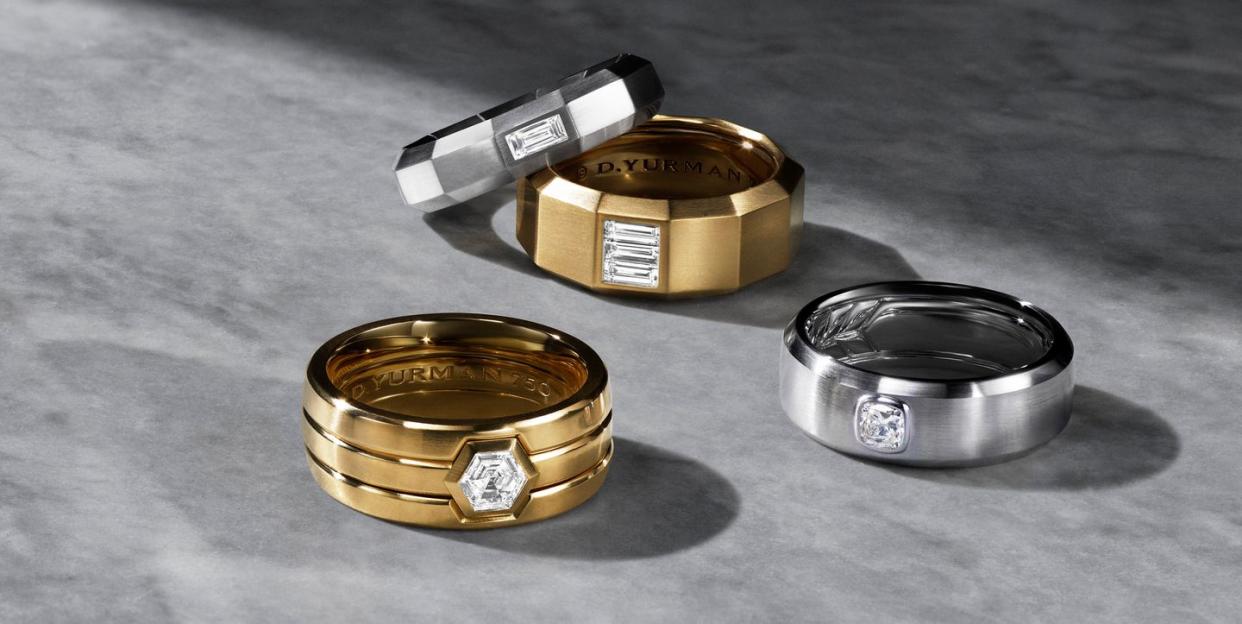
“Hearst Magazines and Verizon Media may earn commission or revenue on some items through the links below.”
When Tiffany’s announced earlier this month that it would sell men’s diamond solitaire engagement rings for the first time in the brand's 184-year history, it caught everyone’s attention. That’s because, as America’s longtime authority on jewelry etiquette, Tiffany’s had never made big diamonds available for men, and this move reflected our changing times. Men are embracing statement jewels, and gender-free style is here to stay—along with same-sex unions. And shouldn’t men have an equal opportunity to enjoy great jewels?
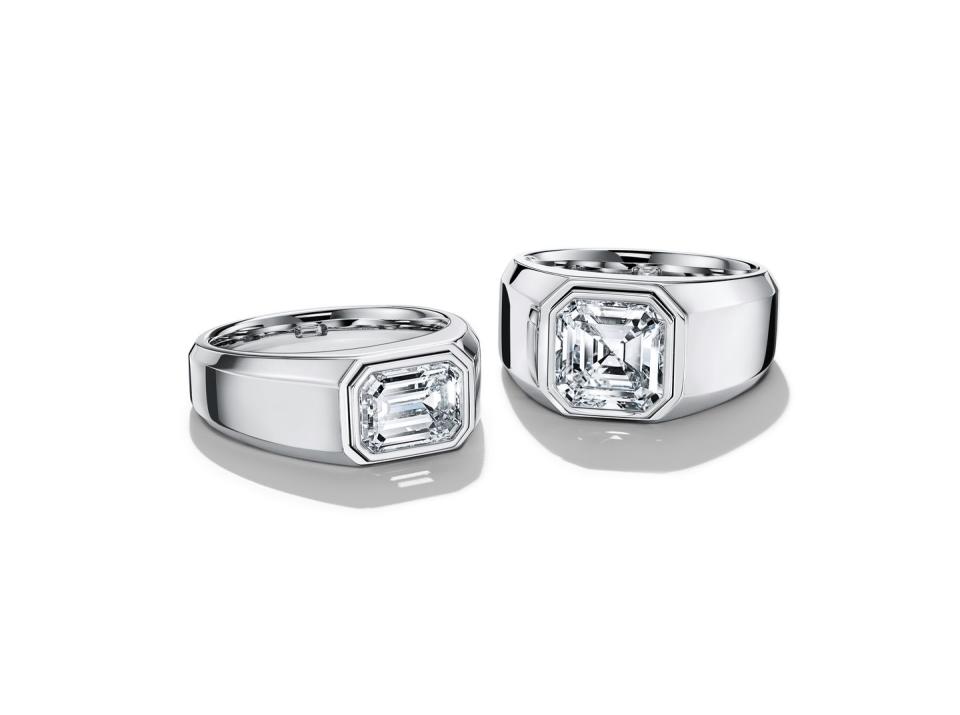
It’s hardly a new trend. Male royals, Maharajahs, and power players have donned big diamonds and jewels over the centuries. King Louis XIV was known for draping himself in diamonds (including the famous Hope Diamond) as symbols of wealth and power. The Indian Maharajahs never passed up big Golconda diamonds, which they set in necklaces, brooches, rings, and more, and they far outshined the women of their era. And a diamond pinky ring was always popular with a certain set of well-heeled gentlemen over the years, and it remained so until the 1970s, when the look began falling out of fashion.
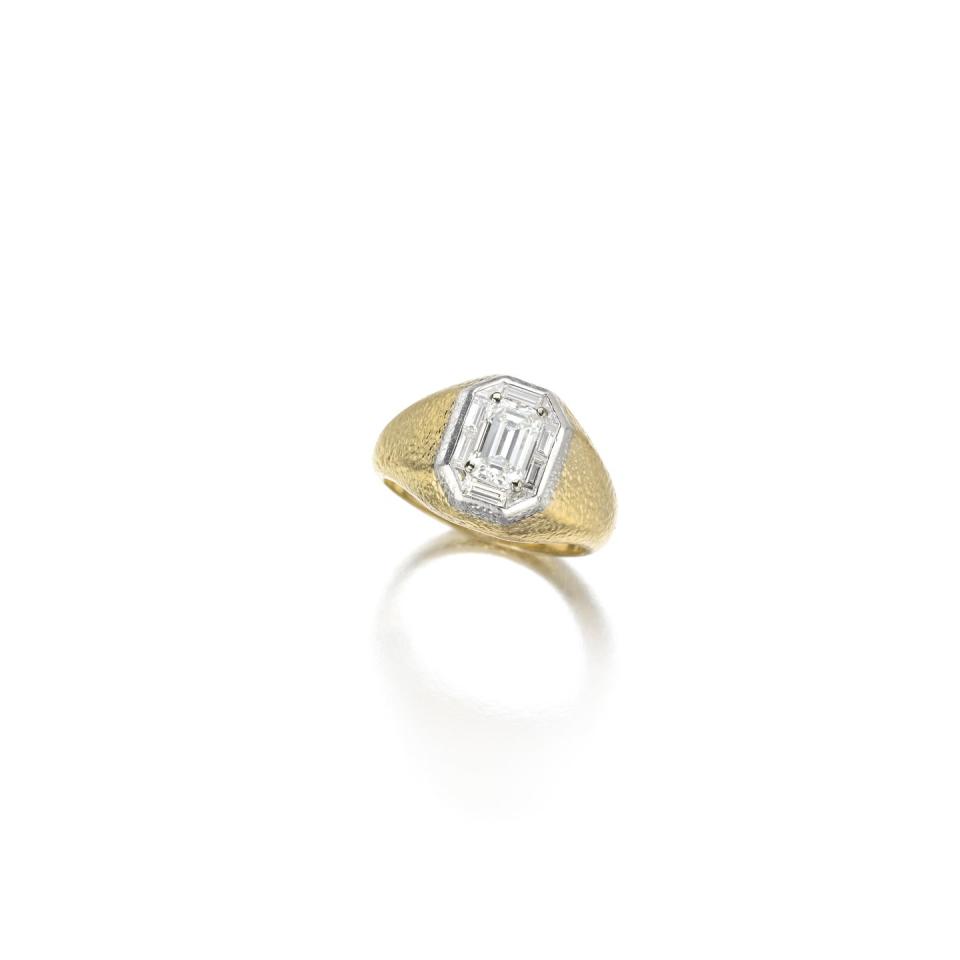
“The interest in men’s diamond rings faded out in the '80s and '90s when the definition of masculinity narrowed a little, and men opted for simple wedding bands and watches over diamond rings,” explains Caroline Morrisey, the head of Bonham’s New York Jewelry department. The house is offering a '70s era “gentleman’s ring” with a 1.68-carat emerald cut diamond in its New York auction May 19, which she says reflects the simple men's diamond ring styles that are in favor now.
Even men who had been reluctant to wear diamond jewelry in the past are easing into it with diamond rings, whether marital rings or just a defining accessory. “Generally speaking, most men understand and can identify with diamonds, as opposed to colored stones which tend to be appreciated more by collectors and connoisseurs,” explains Graeme Thompson, Phillips’s worldwide head of jewelry, who is based in Hong Kong, where it’s perfectly acceptable to see men wearing diamond and gemstone rings.
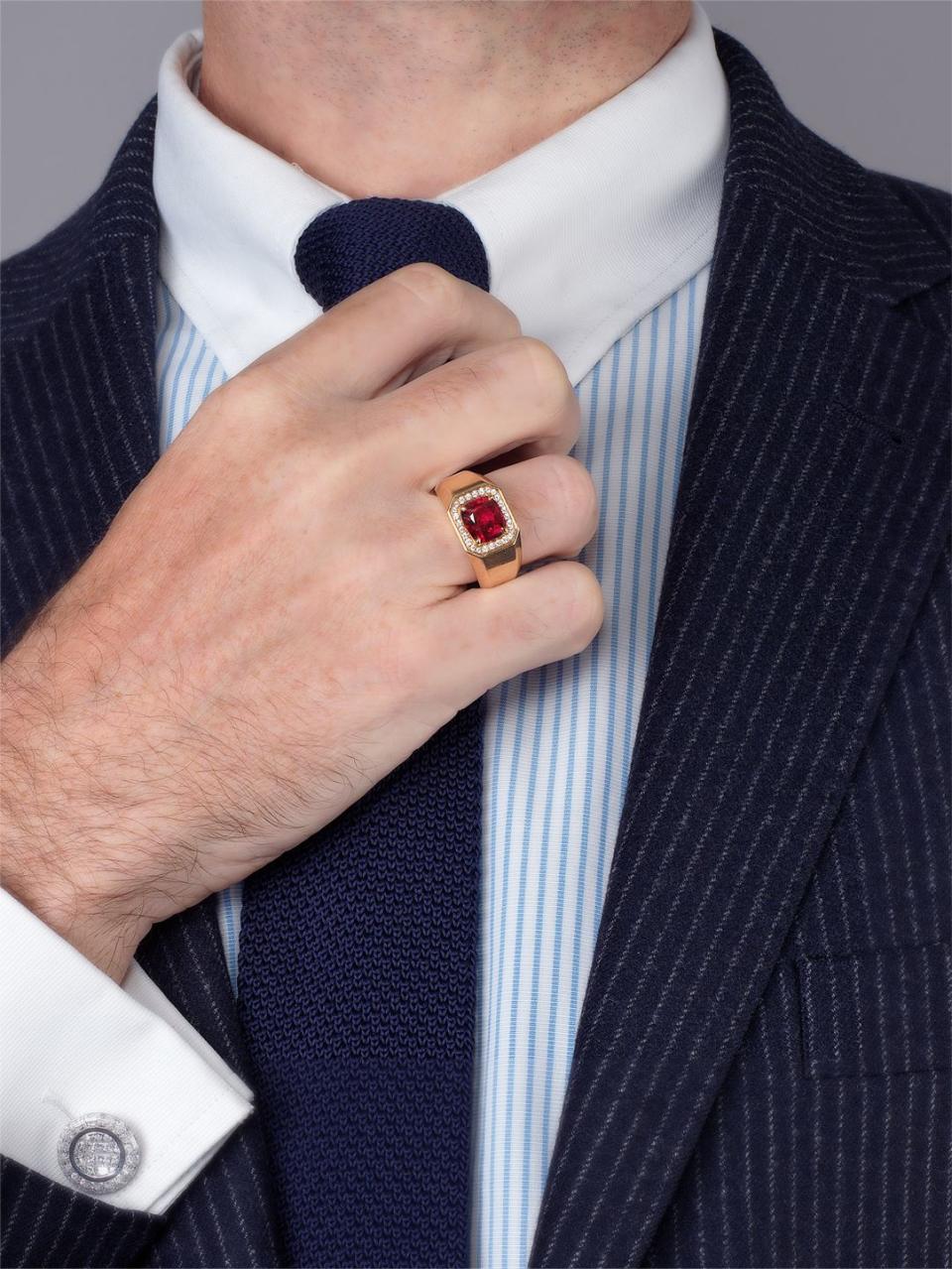
“In Asia, men’s rings are timeless and culturally relevant,” explains Thompson. “The root is more cultural because men’s rings, set with either diamonds, colored stones or both, are worn as a symbol of wealth – the same can be said for tie pins and cufflinks.” He’s seeing a growing demand, especially in the East, for men’s jeweled rings, saying “there is a great deal of pent-up spending power out there. It is predicted that a post-pandemic boom is around the corner, which hopefully means good times of opulence ahead.”
Further bolstering the case for men’s jewelry are the celebrities who have been seen on and off red carpets over the past few years in statement jewels, including Trevor Noah who wore a platinum and diamond Schlumberger Apollo brooch by Tiffany & Co. to the 2021 Grammy Awards, and Timothée Chalamet, who sported a vintage Cartier brooch to the 2020 Oscars.
The continued presence of jewels on celebrities has started to trickle down and has encouraged men to wear diamond jewels and rings. That, combined with today’s new definitions of gender and masculinity, is heralding a new era in men’s diamond rings.
“The fashion-forward man, who has a very strong sense of identity and self-worth, wants to show it and share with the world,” says Morrisey. “Today, if you see a gentleman wearing a diamond ring, it’s a source of interest and a positive thing, and I’m not so sure that was true 20 to 30 years ago.”
Some designers, like Shaun Leane, have always made men's diamond jewelry and are happy to see the trend is finally going mainstream. “It warms my heart to see that men are becoming so much more experimental and freer in their choice of jewelry and braver in their sense of identity,” says the British jeweler, who has observed that men are starting to invest in more elaborate commitment rings and jewelry.
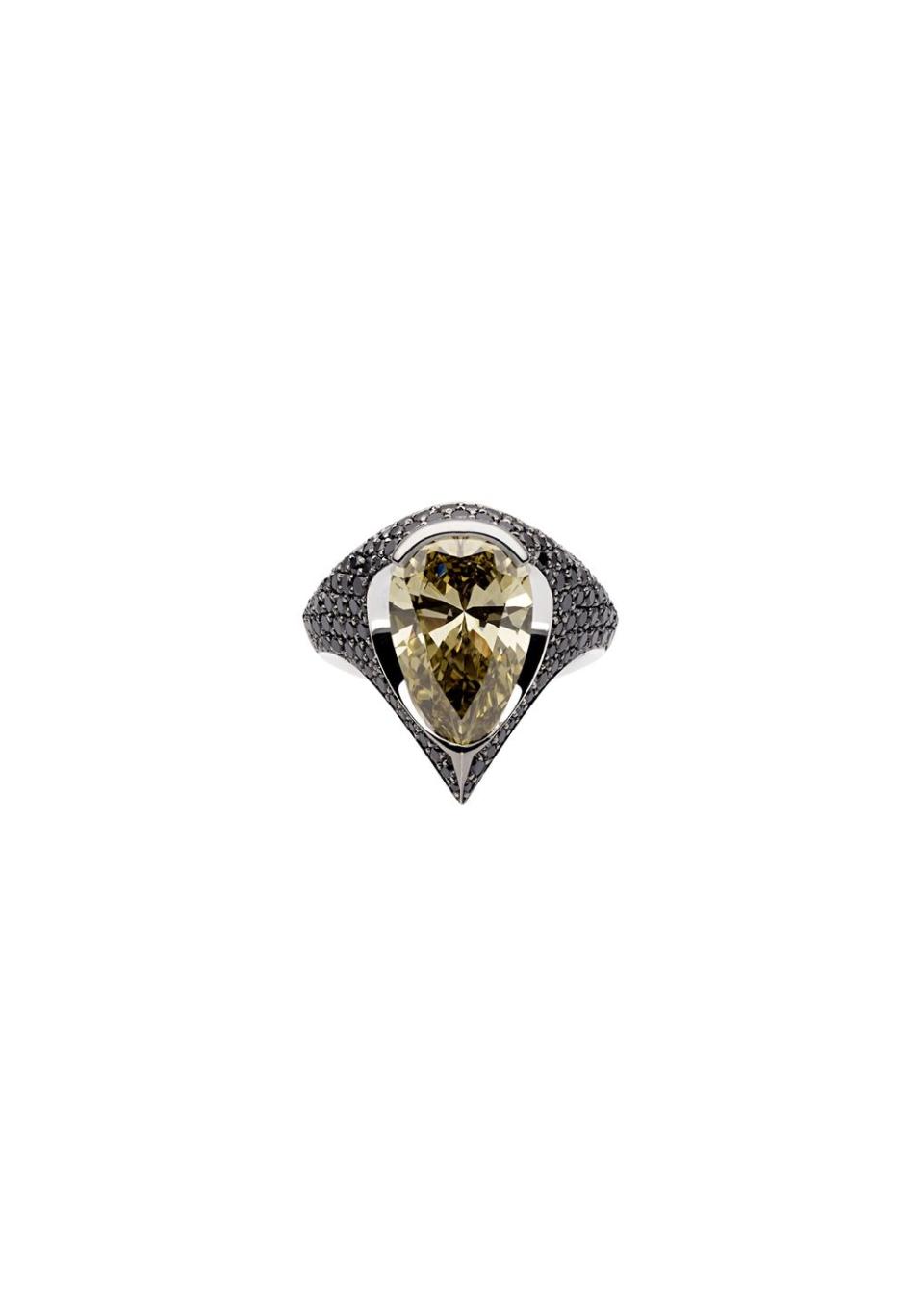
David Yurman has also long believed in diamonds on men and offers a range of sleek, architectural men’s solitaire diamond rings, including black- and cognac-colored diamonds which “inherently have a cool, masculine allure,” says Evan Yurman, chief creative officer. “Diamonds are captivating stones—to both men and women—and consumers are drawn to the idea that these stones are billions of years old and formed at the earth’s core.”
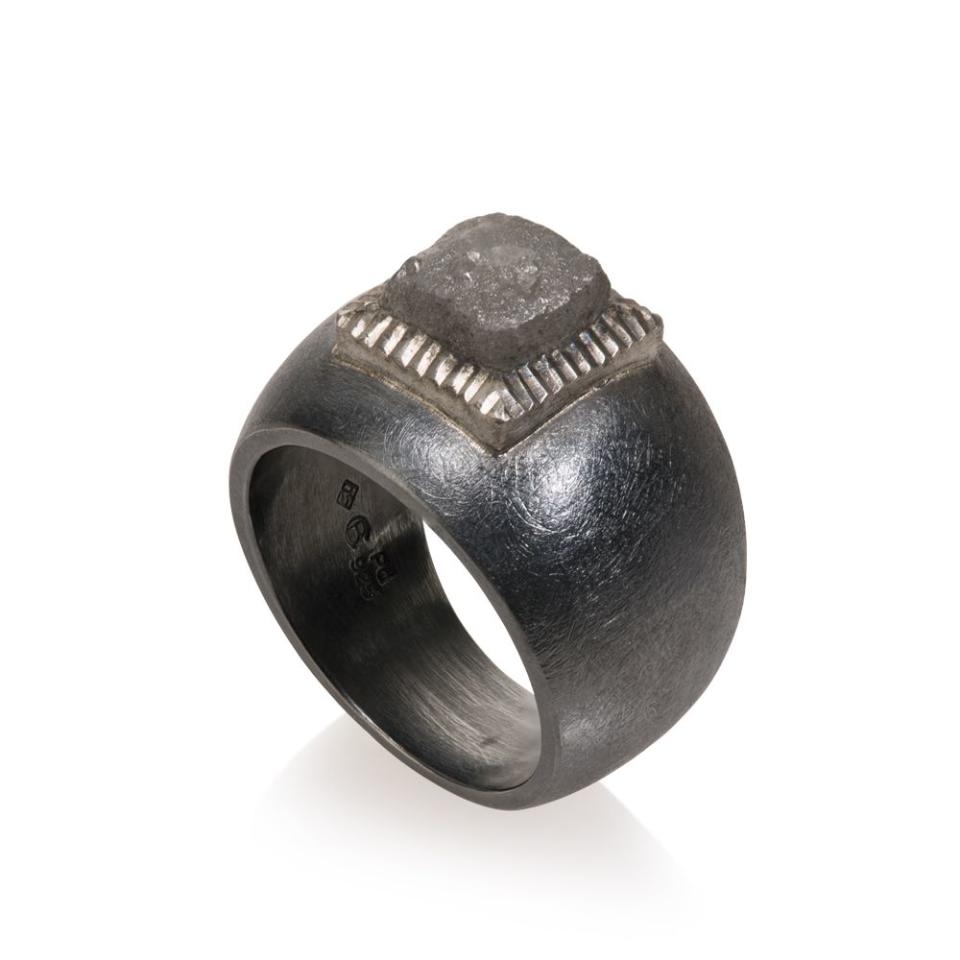
Notably, Todd Reed expresses the masculine aesthetic with rough diamond rings that appear like tumbled rocks in shades of brown, gray and green. “Men are very interested in diamond rings and certainly want to have a unique piece too,” says Reed, who recently made a bespoke men’s ring with a green diamond.
And the new Charles Lewis Tiffany men's rings showcase round or emerald-cut solitaire diamonds up to 4 carats in a signet-style designs. It's a bold statement that shows Tiffany's is adapting and embracing today's changing standards. “Tiffany’s and other companies marketing jewelry to men are responding to something that is happening culturally,” says Lee Siegelson of Siegelson in New York. “In the last five years we have sold and loaned jewelry for photoshoots featuring men in a way we were never asked to in the past.” He adds: “Men have always been drawn to the beauty and power inherent in Golconda diamonds, and it’s even better if they can now wear them.”
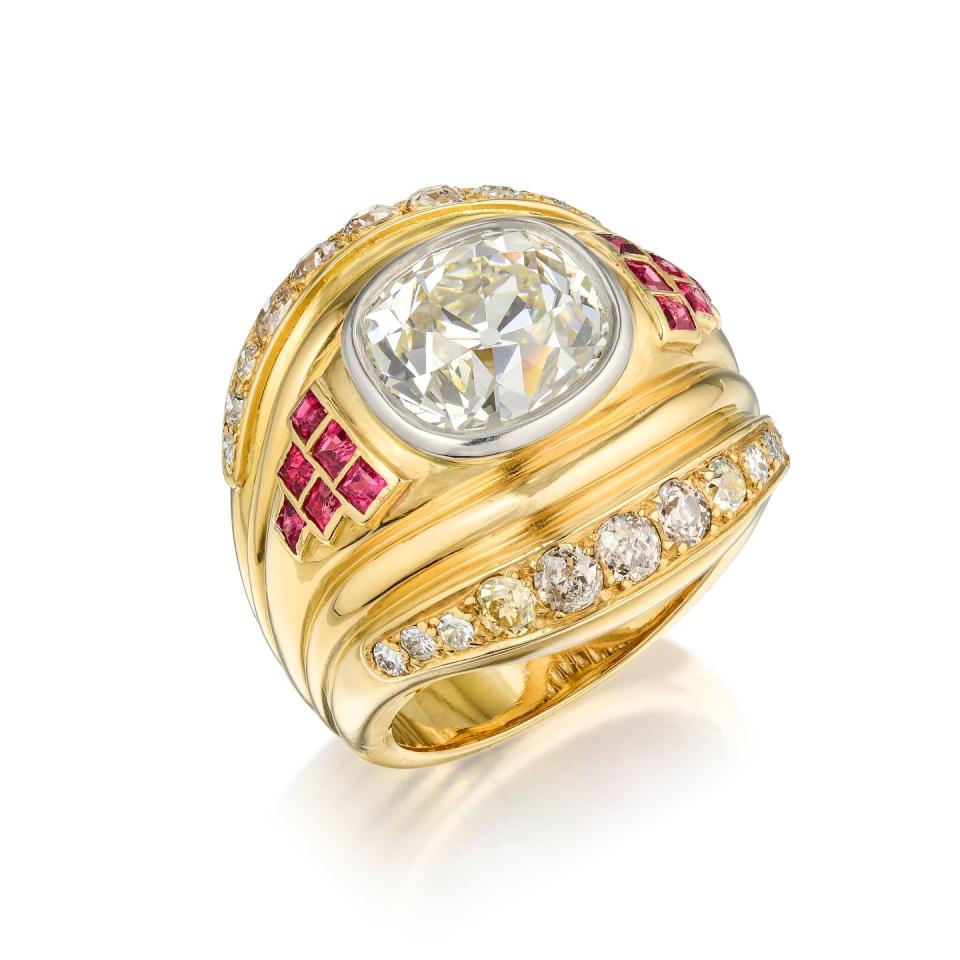
These more streamlined rings are part of the gender-free style that is prevalent in fashion and jewelry today and speak to people’s desire to free themselves from conventional gender rules and express their personal style. Some designers like Loren Teetelli of Loren Nicole, for instance, doesn't design jewelry with gender in mind, it’s about an aesthetic that could appeal to anyone. She’s found her male clients even more willing to invest big diamond rings. “My male clients buy higher value pieces and are true collectors: they come back again and again,” she says.
Now that Tiffany’s has given the okay to wear solitaire diamond engagement rings, we can expect to see even those reluctant men rethink their accessories—and sparkle a little more.
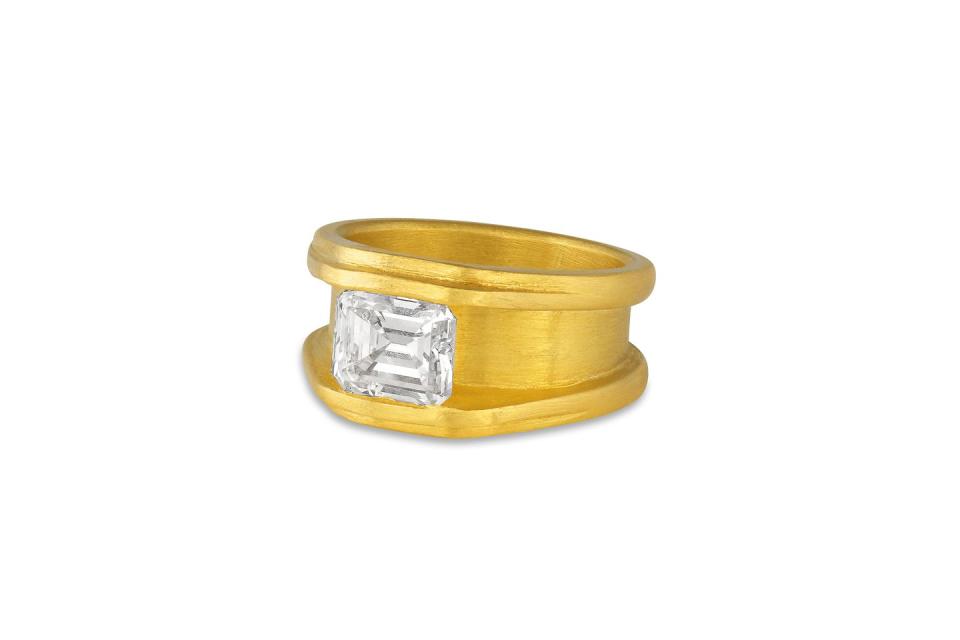
You Might Also Like

